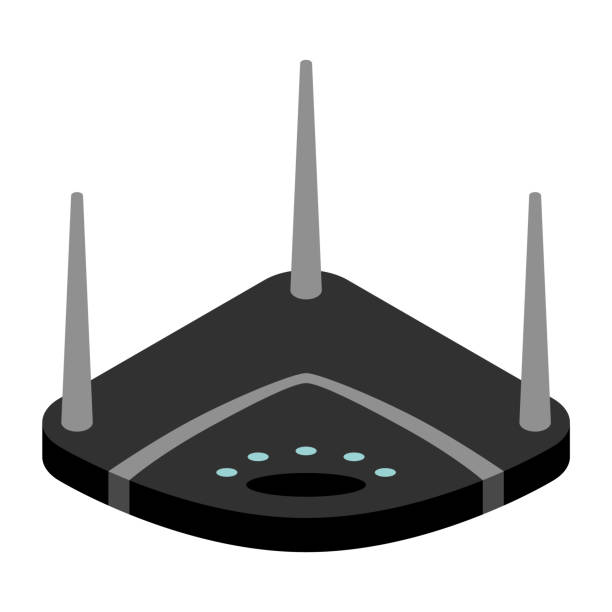Introduction
If you are living in rural areas, getting high-speed internet for streaming can be a challenge due to limited availability and service options. However, with the increasing demand for online streaming services, finding reliable internet connectivity in rural areas has become more important than ever. Well, now there are plenty of options than you think. To help you with that, we will talk about different internet options in this guide. So dig in!
Importance of Internet Speed for Streaming
Well, streaming services like Netflix, Hulu, and Amazon Prime Video require a stable and high-speed internet connection to deliver uninterrupted viewing experiences. Because when your internet is slow, watching videos can be a real pain. You might notice the video pausing often to load, which we call buffering.
Also, the picture might not look clear, with pixels appearing on the screen. And overall, the video quality just isn’t good, making it hard to enjoy what you’re watching. This is frustrating and takes away all the fun of watching your favorite content.
Factors to Consider for Rural Internet Streaming
Availability of Service Providers:
Rural areas mostly have limited options when it comes to internet service providers (ISPs). Some areas may only have one or two providers offering service, while others may have none at all. It is important to research which providers operate in your area before making a decision. That is really important.
Types of Internet Connections:
There are several types of internet connections available in rural areas, each with its own advantages and disadvantages. These include satellite internet, fixed wireless internet, DSL internet, and cellular internet. Moreover, understanding the differences between these options can help you choose the best one for your streaming needs. So read on.
Speed and Reliability:
When streaming video content, speed, and reliability are crucial factors to consider. Different internet connections offer varying speeds and levels of reliability, which can impact the quality of your streaming experience. Factors such as bandwidth, latency, and data caps can all affect how smoothly your videos load and play.
Latency and Buffering:
Latency refers to the time it takes for data to travel from your device to the streaming server and back again. High latency can result in buffering, where your video pauses and loads intermittently. This can be particularly problematic for live streaming or high-definition content.
Data Caps and Usage Limits:
Many rural internet plans come with data caps or usage limits, meaning there’s a limit to how much data you can use each month before your speeds are throttled or you incur additional charges. This can be a significant concern for heavy streamers who regularly watch high-definition content or stream for long periods of time.
Cost and Affordability:
Cost is another important factor to consider when choosing a rural internet plan for streaming. Some providers offer affordable packages with lower speeds and data limits, while others may charge more for faster speeds and unlimited data. It’s essential to weigh the cost against the quality of service you’ll receive to ensure you’re getting the best value for your money.
Reliability of Service:
In rural areas, internet service can sometimes be less reliable due to factors such as inclement weather, geographic terrain, and infrastructure limitations. It’s essential to choose an ISP with a reputation for reliability and customer satisfaction to minimize downtime and service disruptions.
Customer Support and Technical Assistance:
Lastly, it’s important to consider the level of customer support and technical assistance offered by your chosen ISP. If you face any technical issues or service disruptions, having access to knowledgeable and responsive customer support can make all the difference in resolving problems quickly and effectively.

Types of Rural Internet Suitable for Streaming
In rural areas, accessing high-speed internet for streaming can be a challenge due to limited infrastructure and service options. However, with the increasing demand for online streaming services, finding reliable internet connectivity in rural areas has become more important than ever.
Satellite Internet
Satellite internet utilizes satellites in space to provide internet access to rural areas. While it offers widespread coverage, satellite internet can be prone to latency issues and data caps, which may affect streaming quality, especially during peak usage times.
Fixed Wireless Internet
Fixed wireless internet uses radio signals to deliver internet connectivity to rural areas. It offers faster speeds and lower latency compared to satellite internet, making it a viable option for streaming. However, availability may be limited based on geographic location and terrain.
DSL Internet
DSL (Digital Subscriber Line) Internet uses existing telephone lines to deliver internet access. While it may be available in some rural areas, DSL speeds are typically slower than other options, making it less suitable for streaming high-definition content.
Cellular Internet
Cellular internet relies on cellular networks to provide internet access, making it accessible in many rural areas. With advancements in 4G and 5G technology, cellular internet speeds have improved, making it a viable option for streaming on-the-go. However, coverage may vary depending on your location and proximity to cell towers.
However, these are the main types of rural internet suitable for streaming. Each option has its own pros and cons, so it’s important to consider factors such as availability, speed, and reliability when choosing the best internet connection for your streaming needs.
| Call 866-861-4084 for Internet Deals |
Pros and Cons of Each Option
Satellite Internet
Pros:
Wide Coverage: Satellite internet is available in remote and rural areas where other types of internet may not reach.
No Infrastructure Required: Since it relies on satellites in space, satellite internet doesn’t require extensive infrastructure to be built on the ground.
Quick Installation: Installation of satellite internet is typically quick and easy, with minimal setup required at the user’s location.
Cons:
Latency Issues: Satellite internet can suffer from high latency due to the long distance signals must travel between Earth and satellites in space, leading to delays and slower response times.
Data Caps: Many satellite internet plans come with data caps, limiting the amount of data you can use each month. Exceeding these caps can result in reduced speeds or additional charges.
Weather Dependency: Bad weather conditions such as heavy rain or snow can interfere with satellite signals, affecting internet performance and reliability.
Fixed Wireless Internet
Pros:
Faster Speeds: Fixed wireless internet typically offers faster speeds compared to satellite internet, making it suitable for streaming high-definition video content.
Lower Latency: Since signals travel shorter distances between fixed wireless towers and user locations, fixed wireless internet generally has lower latency and faster response times.
Reliable Connection: Fixed wireless internet can provide a reliable connection with minimal downtime, especially in areas with good line-of-sight to nearby towers.
Cons:
Limited Availability: Fixed wireless internet may not be available in all rural areas, particularly in remote locations or areas with challenging terrain.
Line-of-Sight Requirements: Fixed wireless internet requires a clear line-of-sight between the user’s location and the nearest tower, which can be obstructed by trees, buildings, or other obstacles.
Interference: Interference from other wireless devices or environmental factors can affect the reliability and performance of fixed wireless internet connections.
DSL Internet
Pros:
Availability: DSL internet may be available in some rural areas where traditional cable or fiber-optic internet is not an option.
Relatively Low Cost: DSL internet plans are often more affordable than other types of broadband, making them a budget-friendly option for rural residents.
Existing Infrastructure: DSL internet utilizes existing telephone lines, which are already in place in many rural areas, reducing the need for new infrastructure.
Cons:
Slow Speeds: DSL internet speeds are generally slower than other types of broadband, particularly for users located far from the provider’s central office.
Distance Limitations: DSL speeds degrade over distance from the provider’s central office, so users located far from the office may experience slower speeds and reduced reliability.
Limited Bandwidth: DSL internet plans may come with limited bandwidth or data caps, restricting the amount of data users can consume each month.

Cellular Internet
Pros:
Widespread Coverage: Cellular internet is available in many rural areas thanks to extensive cellular network coverage, providing internet access where other options may not reach.
Improved Speeds: Advancements in 4G and 5G technology have significantly improved cellular internet speeds, making it suitable for streaming high-definition video content.
Mobility: Cellular internet allows users to access the internet from anywhere within cellular coverage areas, making it ideal for those who need internet access on the go.
Cons:
Data Caps: Many cellular internet plans come with data caps or throttling, limiting the amount of data users can consume each month before experiencing reduced speeds.
Network Congestion: During peak usage times or in densely populated areas, cellular networks may become congested, leading to slower speeds and reduced reliability.
Limited Coverage: While cellular internet is widely available, coverage may be limited in remote or sparsely populated areas, particularly in regions with poor cellular network infrastructure.
Optimizing Your Rural Internet Connection for Streaming
Streaming video content in rural areas can be challenging due to limited internet options. However, with some optimization techniques, you can improve your streaming experience and enjoy smooth, uninterrupted playback. So, here are some tips for optimizing your rural internet connection for streaming:
1. Choose the Right Internet Plan:
Before you can optimize your internet connection, you need to ensure you have a suitable plan for streaming. Look for internet service providers (ISPs) that offer plans with sufficient bandwidth and data allowances for streaming video content. So, upgrade to a higher-speed plan if necessary to make sure smooth playback without buffering.
2. Upgrade Your Equipment:
Moreover, spending on quality networking equipment can significantly improve your internet connection for streaming. So think about upgrading to a modern router and modem that supports the latest Wi-Fi standards, such as Wi-Fi 6, for faster speeds and better coverage. Additionally, using wired connections whenever possible can provide more stable and consistent speeds compared to Wi-Fi.
3. Optimize Your Wi-Fi Setup:
If you’re using Wi-Fi to connect your devices to the internet, optimizing your Wi-Fi setup can help improve your streaming experience. Place your router in a central location away from obstructions like walls and furniture to ensure optimal signal strength. Additionally, consider using Wi-Fi extenders or mesh network systems to extend coverage to areas with poor signal reception.
4. Limit Background Usage:
Streaming video content requires a significant amount of bandwidth, so it’s essential to minimize background usage that could impact your streaming experience. Close unnecessary applications and browser tabs on your devices to reduce bandwidth consumption and prioritize streaming traffic. Additionally, consider scheduling downloads and updates for non-peak hours to avoid congestion on your network.
5. Use Quality-of-Service (QoS) Settings:
Many modern routers come with Quality-of-Service (QoS) settings that allow you to prioritize certain types of internet traffic, such as streaming video, over others. Enable QoS settings on your router and prioritize streaming traffic to ensure a smooth and consistent streaming experience, even when other devices on your network are in use.
6. Monitor and Troubleshoot:
Regularly monitor your internet connection speed and performance using online speed testing tools or built-in router diagnostics. If you experience buffering or playback issues while streaming, troubleshoot the problem by checking for network congestion, interference, or other technical issues. Contact your ISP for assistance if you’re unable to resolve the issue on your own.
7. Consider Alternative Options:
If traditional internet options like DSL or satellite are not providing adequate speeds for streaming, consider alternative options such as fixed wireless internet or cellular internet. These technologies may offer faster speeds and better reliability in rural areas, providing a more suitable solution for streaming video content.
| Call 866-861-4084 for Internet Deals |
Conclusion
That’s all from our side. Well, accessing high-speed internet for streaming in rural areas can be challenging, but it’s not impossible. By considering factors such as availability, speed, and reliability, rural residents can make informed decisions when choosing the best internet option for their streaming needs.
FAQs
Can I stream Netflix with satellite internet?
While it’s possible to stream Netflix with satellite internet, users may experience buffering and other interruptions due to latency issues and data caps.
Is fixed wireless internet available everywhere?
Fixed wireless internet availability varies depending on geographic location and terrain, but it’s increasingly becoming more accessible in rural areas.
How can I improve my rural internet connection for streaming?
You can improve your rural internet connection for streaming by optimizing your Wi-Fi setup, using a wired connection when possible, and choosing an internet plan with higher speeds and data allowances.
What is the best internet speed for streaming in rural areas?
The best internet speed for streaming in rural areas depends on the quality of the video content you’re streaming. Generally, a minimum speed of 5 Mbps is recommended for streaming standard-definition video, while higher speeds are needed for high-definition and 4K streaming.
Are there any government programs to improve rural internet access?
Yes, there are government programs such as the Federal Communications Commission’s (FCC) Rural Digital Opportunity Fund (RDOF) that aim to expand broadband access in rural areas through funding and subsidies.

Meet Jennifer Harper, a wordsmith extraordinaire who has been shaping the digital landscape with her creative prowess for the past two years. Not just a content writer; she is a storyteller who brings the content to life. Her passion for internet trends, memes, and the ever-evolving world of entertainment is evident in every piece she creates. Jennifer doesn’t just follow trends; she sets them.